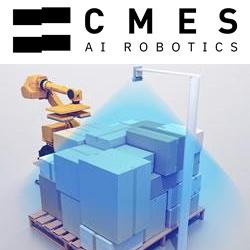Autonomous Solutions, Inc. (ASI) receives SBIR funding for Deep Learning architecture to support multiple sensors in GPS-denied environments
ASI receives SBIR Phase I grant from the U.S. Army to develop a Deep Learning (DL) architecture that will support sensor fusion in environments with limited, or no, GPS.
Autonomous Solutions, Inc. (ASI) has been awarded a SBIR Phase I grant from the U.S. Army Combat Capabilities Development Command Ground Vehicles Systems Center (formerly TARDEC) to develop a Deep Learning (DL) architecture that will support sensor fusion in environments with limited, or no, GPS.
"Environmental sensing today typically includes cameras, LiDAR and radar," said Jeff Ferrin, CTO of ASI. "Each of these devices has a specific purpose, but not all of them work well in every situation. For example, cameras are great at collecting high-resolution color information, but do not provide much useful information in the dark."
In addition to the challenges faced by cameras in poorly lit or degraded visual environments, LiDAR and radar sensors also have limitations. LiDAR performs well in most light conditions but may yield false positives in heavy rain, fog, snow or dust, due to its use of light spectrum wavelengths. Radar usually penetrates these degraded visual environments, but often lacks spatial resolution.
"ASI's goal is to design a deep learning architecture that fuses information from LiDAR, radar and cameras," said Ferrin. "We plan to build upon machine learning techniques we have already developed for LiDAR data."
Deep learning is a branch of artificial intelligence and machine learning that allows valuable information to be extracted from large volumes of data. Cameras are often used in deep learning models because of their high output of information in regularly sampled data structures.
The case is different for LiDAR and radar. Naturally, these two sensor types do not provide regularly sampled data, making it difficult to formulate problems using current deep learning frameworks. This gap in current research efforts - deep learning for LiDAR and radar - is the focus of this grant.
Improved utilization of data from multiple devices can paint a more accurate picture of a vehicle's surroundings, keeping it safer and making it more efficient. The details of the grant solicitation state, "It is anticipated that harnessing a wide variety of sensors altogether will benefit the autonomous vehicles by providing a more general and robust self-driving system, especially for navigating in different types of challenging weather, environments, road conditions and traffic."
"In the last few years, we have seen a growing need in the world of robotics to advance industry capabilities in machine learning, deep learning, and other artificial intelligence algorithms to improve performance in these challenging environments," said Ferrin.
ASI is required to demonstrate the feasibility of the deep learning architecture in a simulation environment, including a road following system that controls an autonomous vehicle, on a course with obstacles and a degraded visual environment.
About ASI
Autonomous Solutions, Inc. (ASI) is a world leader in industrial vehicle automation. ASI serves clients across the world in the mining, agriculture, automotive, government, and manufacturing industries with remote control, teleoperation, and fully automated solutions from its headquarters and 100-acre proving ground in northern Utah.
Featured Product

CMES - AI-Powered 3D Robot Vision
Powered by AI, CMES Robotics enables 3D vision for factory robots. CMES AI vision software enables robots to recognize unstructured, flexible, or deformed objects, pick them up, and loading and unloading. CMES Vision software has been deployed worldwide for random palletization and depalletization along with void filling applications. CMES Robotics automates your warehouse, logistics, and supply chain. For more information, please visit: cmesrobotics.com or email info@cmesrobotics.com.
